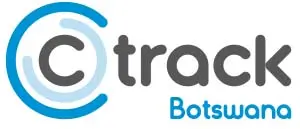Improving driving styles key to fuel and maintenance costs savings
Driver behaviour has a major impact on the profitability of any business operating a fleet of vehicles. Through measuring certain driving behaviour, Ctrack’s fleet management can help the fleet owner to reduce fuel and maintenance costs by up to 20%. Hein Jordt, MD of Ctrack Fleet Management Solutions, explains.
1. What driver behaviour is Ctrack able to monitor?
We report and measure direct driving behaviour such as harsh acceleration, harsh braking, speeding or harsh cornering. When our in-cab driver terminal is used or a driver behaviour indicator is installed, the driver is given real-time feedback on their driving style to promote better driving. A series of green, amber and red warning lights instantly alert the driver of any infringements.
Ctrack telematics technology allows real-time monitoring of your drivers’ performance at all times. We control vehicle usage by the use of a driver identification key, RFID tag, or biometrics. After a driver ‘clocks in’, we record and report on behaviour in relation to stop and starting points, route compliance and points of interest – where, for example, designated delivery reports or marked No-Go areas can restrict vehicle abuse.
2. How do customers receive information about driver behaviour?
Customers have the option to receive alerts via e-mail or SMS, or may choose both. We provide daily reports which can be viewed on the Ctrack Business Intelligence dashboard. Data Analytics plays an important role in providing hindsight, insight as well as foresight.
Ctrack’s reporting is dynamic, which avoids the waiting when using old-fashioned static reports. We can provide instant answers to what is using real-time and historical data.
3. What level of detail can Ctrack include in its driver behaviour reports?
Ctrack’s web-based driver behaviour reporting provides a comprehensive fleet overview with both individual vehicle and driver reports. We can also investigate incidents such as accidents by analysing the data produced. Through our detailed reports, customers are realizing benefits such as reduced fuel and maintenance costs, reduced occurrence of accidents, reduced risk and increased profits, among others.
4. How quickly can this information be made available?
Driver performance information can be accessed in real time. It is up to the customer as to whether he wants to view it hourly, daily, weekly or monthly. Reports on high risk incidents, such as speeding, can be sent immediately to you via SMS or e-mail.
5. How much money has Ctrack been able to save companies/fleets through Driver Monitoring Technology (DMT)?
We have numerous cases where our telematics technology has saved companies on fuel and maintenance costs through improved driving behaviour. Typically this ranges from 5% to 20%, depending on the type of fleet and industry. In one case, a fleet company with 186 vehicles saw a 20% improvement in fuel consumption, while speeding events were reduced from 46 000 in 2014 to just 4 800 in 2015.
In another case, a fleet company with 270 vehicles saved 80 000 liters of fuel in one year. We’ve seen cases where insurance costs have been reduced up to 5% per year, and we have seen indirect savings on maintenance and repairs by managing the total fleet status on our software.
6. What common misconceptions exist about DMT?
DMT often has a negative connotation, since it can easily appear as if fleet operators use the information supplied to them to “punish” bad driving behaviour. In some companies the tracking units are, in other words, seen as negative control measures, rather than positive for the company as a whole.
It is important to educate your driver on the benefits of DMT, since this can lead to an overall positive attitude. The driver needs to understand that accurate driver scoring reports can help address the training needs of non-efficient drivers, reduce the risk of driver accidents, and improve safety with vehicle speed monitoring. Certain companies may choose to reward good driving behaviour, which can further contribute to a happy and productive employee – an action that we support.
7. What technology or features will you be adding in the future?
Our technology is well geared to support the Road Transport Management System (RTMS) self-regulation scheme in implementing a vehicle management system that preserves road infrastructure, improves road safety and increases productivity. Being part of a global company, Ctrack also possesses other technologies which can be integrated to provide Software-as-a-Service solutions to a multitude of industries.
With our fleet management software, Ctrack FleetConnect, we will continue to integrate with third party software such as fuel cards.
Compiled by: Leané du Plessis
Article originally appeared in Transport World Africa.

